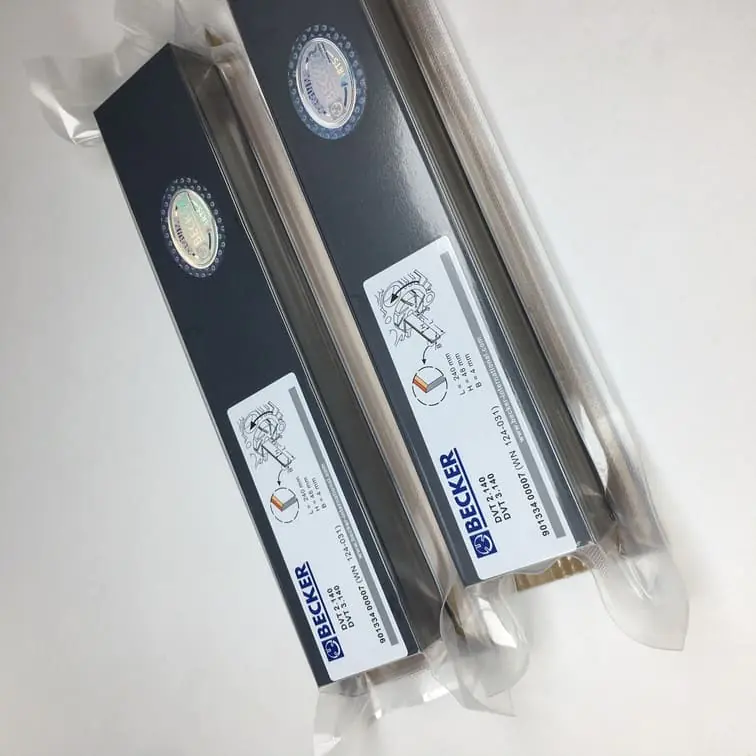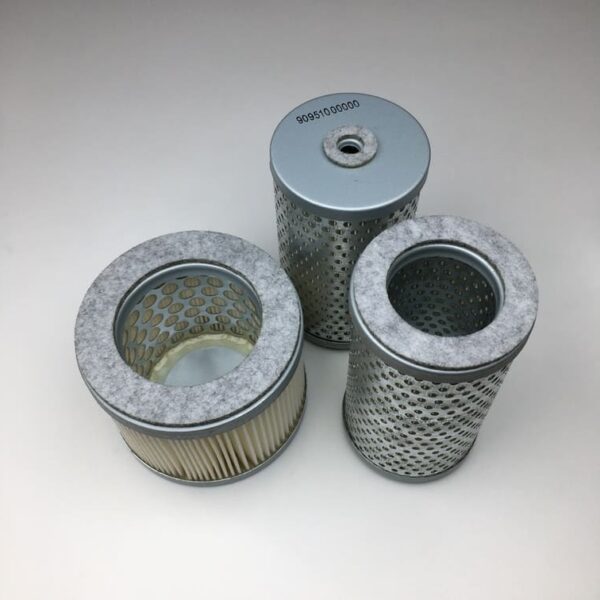A vacuum pumping system is an essential piece of technology used across a variety of industries, from automotive to manufacturing and scientific research. These systems create a vacuum by removing gas molecules from a sealed volume, thus reducing the pressure and providing an environment suitable for many industrial and laboratory applications. In this article, we will discuss in detail the components, types, and applications of vacuum pumping systems, including how they work and why they are important.
The Basics of Vacuum Pumping Systems
At its core, a vacuum pumping system is a system designed to reduce the pressure in a particular chamber or volume by extracting air and gas molecules. The system consists of several key components, including the pump, filters, and vacuum chamber itself. This process is necessary for a variety of applications, such as manufacturing microelectronics, coating materials, and creating controlled environments for scientific experiments.
Key Components of a Vacuum Pumping System
- Vacuum Pump: The main device that removes gas molecules from the system to create a vacuum. The pump can be of various types, including rotary vane pumps, liquid ring pumps, and scroll pumps.
- Vacuum Chamber: The enclosed space where the vacuum is created. Often made of stainless steel, it is designed to withstand the pressure differences created by the vacuum.
- Filters: Used to trap contaminants before they reach the pump, thereby protecting the system and extending the pump’s lifespan.
- Pipes and Valves: Facilitate the movement of gases and connect the different components of the vacuum system.
“A well-designed vacuum pumping system can make the difference between efficient operation and constant downtime.” – Platinum Member Engineer
Why Do We Need a Vacuum?
The purpose of creating a vacuum is to control the environment within the chamber, which can significantly affect the results of many processes. For instance, in coating materials with thin films, a vacuum is needed to ensure an even and uncontaminated application. In electronics, vacuum systems are used to prevent interference from air molecules.
- Controlled Atmosphere: To ensure minimal interference during sensitive processes.
- High Precision Manufacturing: Needed in the production of microelectronics and optics.
- Gas Removal: To remove unwanted gases that could react with materials.
Types of Vacuum Pumping Systems
Vacuum pumping systems come in several types, each suited for different applications. The selection of a system depends on factors such as pressure requirements, flow rate, and type of gas molecules present in the environment.
1. Positive Displacement Vacuum Pumps
Positive displacement pumps work by expanding a cavity, allowing gases to enter, and then sealing the cavity before releasing the gases. These pumps are effective for low and medium vacuum levels.
Types of Positive Displacement Pumps
- Rotary Vane Pumps: Often used in laboratory settings, they operate by rotating vanes that trap and compress gas molecules.
- Liquid Ring Pumps: These pumps use a rotating impeller to create a ring of liquid, which traps gas and expels it. They are commonly used for applications involving water vapor or other condensable gases.
| Pump Type | Application | Pressure Range (mbar) |
|---|---|---|
| Rotary Vane Pump | Laboratories, Automotive | 10^-3 to 10^3 |
| Liquid Ring Pump | Textile, Chemical Processes | 50 to 1000 |

2. Momentum Transfer Vacuum Pumps
Momentum transfer pumps, also known as molecular pumps, work by transferring momentum from fast-moving blades to gas molecules. These are used for achieving high and ultra-high vacuums and are often combined with positive displacement pumps.
- Diffusion Pumps: Use vapor jets to carry gas molecules toward the outlet, achieving very low pressures.
- Turbo Molecular Pumps: Use high-speed rotating blades to impart momentum to gas molecules, pushing them out of the chamber.
“Momentum transfer pumps are crucial for applications that require an ultra-clean environment.” – Super Member Technician
3. Dry Vacuum Pumps
Dry vacuum pumps operate without the use of oil or water as a sealing fluid. They are especially useful in applications where contamination must be avoided, such as in semiconductor or pharmaceutical industries.
- Screw Vacuum Pumps: These pumps use two interlocking screws that rotate and trap gas, compressing it toward the outlet.
- Scroll Vacuum Pumps: Use two interleaving scrolls to compress gases and move them out of the chamber.
Table: Different Vacuum Pump Types and Their Applications
| Pump Type | Typical Application | Pressure Range |
|---|---|---|
| Rotary Vane Pump | Automotive, Laboratory | Low to Medium |
| Liquid Ring Pump | Chemical Industry | Medium |
| Turbo Molecular Pump | Electronics, Research | High to Ultra-High |
| Scroll Pump | Pharmaceutical, Clean Rooms | Medium |
How Does a Vacuum Pumping System Work?
The operation of a vacuum pumping system involves several stages, which vary depending on the desired vacuum level and the type of pump used. Here’s a general breakdown of how these systems operate:
Stage 1: Initial Pump Down
The initial stage involves removing the bulk of the gas present in the chamber. Positive displacement pumps like rotary vane or liquid ring pumps are usually used during this stage because of their ability to handle high volumes of air.
Stage 2: Intermediate Vacuum Creation
As the pressure within the chamber drops, the efficiency of the initial pump may decline. This is when booster pumps or intermediate vacuum pumps come into play to bridge the gap between low and high vacuum pressures.
Stage 3: High Vacuum Creation
To achieve a high or ultra-high vacuum, a momentum transfer pump such as a turbo molecular pump is introduced. These pumps work effectively at low pressures and help achieve the ultimate vacuum level required.
Stage 4: Maintenance and Control
Maintaining a stable vacuum is critical in many applications, and this is done using valves and vacuum gauges to monitor pressure levels and adjust as necessary.
Pro Tip: Regular maintenance, including checking the condition of the rotary vane and ensuring that filters are clean, is crucial for keeping the vacuum pumping system in optimal condition.
Factors Influencing the Efficiency of Vacuum Pumping Systems
Several factors affect the efficiency of vacuum pumping systems, and understanding these can help optimize their performance.
1. Pumping Speed
Pumping speed is the volume of gas a pump can remove per unit of time. Higher pumping speeds generally result in faster vacuum creation. However, the pumping speed must be balanced with the volume of the chamber and the type of gas being removed.
- Volume Flow Rate: Measured in cubic meters per hour (m³/h) or liters per second (l/s).
- Gas Type: Different gases may require different pumping mechanisms based on their molecular weight and properties.
2. Leaks and Contaminants
Leaks are one of the biggest challenges in maintaining a vacuum. Even small leaks can significantly affect performance, particularly in high and ultra-high vacuum systems.
- Detection: Use helium leak detectors to find and seal any leaks.
- Prevention: Ensure all gaskets and seals are in good condition and replace them regularly.
3. Condition of the Pump
The condition of the pump and its components—such as carbon vanes and filters—will significantly affect the system’s performance. Regular checks and maintenance are required to avoid reduced efficiency or complete system failure.
- Carbon Vanes: Should be replaced periodically to maintain efficiency.
- Filters: A clean filter ensures that contaminants do not reach the pump, prolonging its life.
Applications of Vacuum Pumping Systems
Vacuum pumping systems are used in a wide range of industries, each with its own set of unique requirements.
1. Automotive Industry
In the automotive industry, vacuum pumping systems are used for testing and brake boosting. The rotary vane pumps are often employed to create the necessary vacuum level for these applications.
- Brake Boosters: Create vacuum pressure to make braking more efficient.
- Fuel System Testing: Vacuum pumps are used to test for leaks or performance issues.
2. Manufacturing
Manufacturing processes, especially those involving plastic molding or thin-film coating, use vacuum pumps to ensure that the materials are molded or coated evenly without contamination.
3. Pharmaceutical Industry
In the pharmaceutical industry, vacuum systems are used to create sterile environments for drug manufacturing. Scroll vacuum pumps are commonly used as they do not use oil, reducing the risk of contamination.
Internal Links for More Information
For detailed guides on vacuum pumps and parts, you can refer to the following resources available at vacuumpumppart.com:
- Vacuum Pump Spare Parts – Find all the spare parts you need to maintain your vacuum pumping system, including Becker air filters and carbon vanes.

- Becker Air Filters – Learn how to replace and maintain your Becker air filters to ensure your vacuum system operates efficiently.

Frequently Asked Questions
1. What is a vacuum pumping system used for?
A vacuum pumping system is used to create a vacuum, or low-pressure environment, within a chamber. This is important for applications in manufacturing, laboratory experiments, and even automotive systems.
2. How does a rotary vane vacuum pump work?
A rotary vane vacuum pump uses a rotating set of vanes that trap gas molecules and move them to the pump’s outlet, thereby creating a vacuum. It is widely used in both industrial and laboratory applications.
3. What are the main types of vacuum pumps?
The main types of vacuum pumps include positive displacement pumps (such as rotary vane and liquid ring), momentum transfer pumps (like diffusion and turbo molecular), and dry vacuum pumps (such as screw and scroll pumps).
4. How do I maintain my vacuum pumping system?
Regular maintenance includes checking and replacing filters, inspecting carbon vanes, and monitoring the overall condition of the pump. Clean filters and functioning parts are key to efficient operation.
5. What is the purpose of a vacuum chamber?
A vacuum chamber is an enclosed space designed to contain a vacuum. It allows experiments and manufacturing processes to occur without interference from air or other gases.
Conclusion
A vacuum pumping system is crucial in creating controlled environments required for various industries, from automotive to pharmaceuticals. Understanding the components, types, and operations of these systems allows for more effective use and maintenance. Regular monitoring, using appropriate types of pumps for specific applications, and ensuring the vacuum level is maintained efficiently are all vital to the successful operation of these systems. By understanding the fundamentals, you can optimize the performance of your vacuum pumping systems and extend their lifespan.
For more details on parts, maintenance, and choosing the right vacuum pump, visit vacuumpumppart.com. Investing time in learning about your vacuum system now will pay off in long-term reliability and efficiency.
